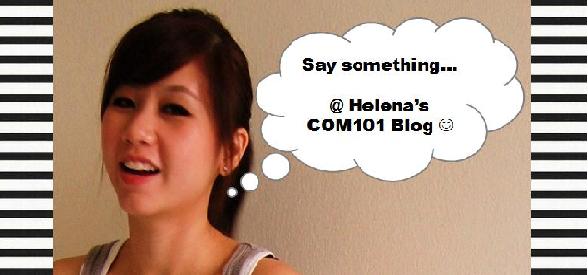In the video clip, Jan Hargrave talked about the hand gestures when taking an oath. It seems that the hand gesture of putting one's right hand up when taking an oath is rather universal and there has been a lot of studies done to determine if someone really means what he or she says just by observing that particular hand gesture. But how confident can we say that someone is truthful or not just by observing his or her body language? As a matter of fact, the majority of our message sent to the other receiver(s) are communicated through nonverbal rather than verbal means, this means that when we are presenting ourselves, we hould not only pay attention to our verbal messages which could most of the time be scripted and rehearsed. What is more important is the spontaneous and impromptu body language; it has to be consistent with our verbal message so that we do not portray ourselves to be hypocrite or keeping something from the other party.
On the other hand, are all hand gestures universal? I do not think so. Here are some hand gestures that I know of that are not univeral. These are cultural-specific and in different cultures across the world, the same gestures may take on a different meaning.
1. The “I Love You" Hand Gesture
 Consisting of a clenched fist with the second and fifth fingers straightened out, the hand gesture has most recently been adopted by fans of rock and heavy metal music, first used by Black Sabbath vocalist Ronnie James Dio. The gesture carries only a vague meaning, implying the presence of Satan, malevolence and loud guitar music, and is used in much the same way as headbanging. However, the hand gesture is actually positive in Buddhism and Hinduism. It is known as the Karana Mudra in such circles, and is used to dispel evil – an interestingly opposite meaning to its contemporary significance. Nowadays, popularized by Japanese drama, the hand gesture means "I Love You" in Asia.
Consisting of a clenched fist with the second and fifth fingers straightened out, the hand gesture has most recently been adopted by fans of rock and heavy metal music, first used by Black Sabbath vocalist Ronnie James Dio. The gesture carries only a vague meaning, implying the presence of Satan, malevolence and loud guitar music, and is used in much the same way as headbanging. However, the hand gesture is actually positive in Buddhism and Hinduism. It is known as the Karana Mudra in such circles, and is used to dispel evil – an interestingly opposite meaning to its contemporary significance. Nowadays, popularized by Japanese drama, the hand gesture means "I Love You" in Asia.2. The “OK” Sign
 Mainly used by scuba divers to mean “OK” (to prevent ambiguity with the thumbs-up sign, which means “ascend", and in America and the UK is often used to tell somebody that they’ve made a great meal, as talking with your mouth would just be impolite. Essentially the meaning comes out as “great”, or “absolutely fine”. Not so, however, in a few countries in Europe, where the numerical interpretation gives the signal an insulting overtone – essentially you’re telling them that you think they’re a ‘zero’.
Mainly used by scuba divers to mean “OK” (to prevent ambiguity with the thumbs-up sign, which means “ascend", and in America and the UK is often used to tell somebody that they’ve made a great meal, as talking with your mouth would just be impolite. Essentially the meaning comes out as “great”, or “absolutely fine”. Not so, however, in a few countries in Europe, where the numerical interpretation gives the signal an insulting overtone – essentially you’re telling them that you think they’re a ‘zero’.Far worse, however, is the meaning in Brazil, Germany and a few Mediterranean countries: the circular shape of the gesture gives it the meaning of “anus”, and is therefore used to call somebody an “asshole”, or, by extension, a homosexual.
3. The "Thumbs Up"
 While Western culture has become used to the thumbs-up as a positive, informal signal, generally indicating a job well done (probably stemming from World War II pilots using the signal to communicate that they were “good to go” with ground crews), there are cultures where a thumbs-up may land you in trouble. In most of Latin America and West Africa, as well as Greece, Russia, Sardinia and the south of Italy, the thumbs-up basically means the same as the middle finger: “sit on it and swivel”. Also, it’s generally not recommended to use the thumbs-up around the Middle East as it’s pretty much the biggest insult out there.
While Western culture has become used to the thumbs-up as a positive, informal signal, generally indicating a job well done (probably stemming from World War II pilots using the signal to communicate that they were “good to go” with ground crews), there are cultures where a thumbs-up may land you in trouble. In most of Latin America and West Africa, as well as Greece, Russia, Sardinia and the south of Italy, the thumbs-up basically means the same as the middle finger: “sit on it and swivel”. Also, it’s generally not recommended to use the thumbs-up around the Middle East as it’s pretty much the biggest insult out there.All in all, most hand gestures, as with other body languages are usually ambiguous and take on different meanings in different cultures. Therefore, it is important to note that one should be consistent in his or her verbal and nonverbal cues when communicating with other people. Also, never attempt to lie, because somehow or another, the party can observe your truthfulness through your nonverbal cues which is often not part of your rehearsed script.


